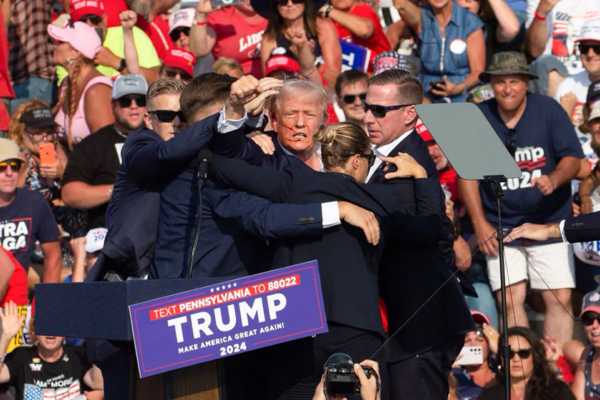The Homeland Security and Governmental Affairs Committee of the United States Senate issued a strongly worded report on Wednesday criticizing the Secret Service for failing to provide protection for former President Trump during a rally in Butler, Pennsylvania in July. The report highlighted multiple mistakes by the agents that could have prevented the shooting incident, which resulted in one fatality and several injuries, including to Trump.
The committee stated that the errors that threatened Trump’s life were both foreseeable and preventable, stemming from failures in communication and coordination between federal, state, and local law enforcement agencies. The report revealed shortcomings in the Secret Service’s planning and security responsibilities, as well as a lack of coordination with state and local law enforcement.
It was noted that crucial security resources, such as drones or counter-surveillance teams, were not provided by the Secret Service. Requests for additional anti-drone systems were denied by agency officials. Additionally, the report revealed that the agency failed to relay information about the suspect to key security personnel and was aware of his presence on a nearby building rooftop minutes before the shooting.
While some security lapses leading to the shooting had been previously reported by the media, the Senate committee’s report provided the most detailed account to date of how the shooter, Thomas Matthew Crooks, targeted Trump, grazing the former president’s right ear with one of the shots.
Investigations revealed that about 27 minutes before the shooting, the Secret Service was notified of a suspicious individual with a rangefinder near the American Glass Research building close to the rally venue. Despite this, the security personnel were slow to react and did not effectively warn Trump’s protectors to remove him from the stage, as a sniper observed law enforcement officers running towards the building.
The report also highlighted contradictory statements from agency officials about ensuring the safety of the building and the area before the shooting. Requests for information made to various federal agencies, including the FBI, Department of Homeland Security, and the Bureau of Alcohol, Tobacco, Firearms, and Explosives, have yet to be satisfactorily answered.
The committee raised concerns about redacted documents provided by the Secret Service and the Department of Homeland Security, hindering their ability to conduct thorough investigations. The cumbersome redactions, including communications related to individuals interviewed by the committee, were deemed counterproductive.
Chairman Gary Peters and ranking member Rand Paul announced a bipartisan investigation by the Senate Homeland Security Committee and the Judiciary Committee in response to the attempted assassination of Trump on July 13. The committees vowed to uncover all facts related to the security breaches that allowed the violent act to occur, resulting in loss of life and injuries.
Following the incident, the House of Representatives approved a resolution to establish a bipartisan special task force to investigate the assassination attempt, gaining overwhelming support in the chamber. The task force, comprising 13 members with the authority to subpoena witnesses, aims to provide a comprehensive report on the incident and security vulnerabilities.
Pennsylvania Congressman Mike Kelly, who was present at the rally and a key sponsor of the resolution, emphasized the importance of investigating and addressing the security flaws to prevent similar incidents in the future. Speaker of the House Mike Johnson and Minority Leader Hakeem Jeffries also expressed their support for the initiative, highlighting the expertise that the members of the task force bring to the investigation.
The bipartisan special task force is expected to release interim reports leading up to the final report due by December 13, shedding light on the inadequacies in security protocols and the events surrounding the shooting incident.

